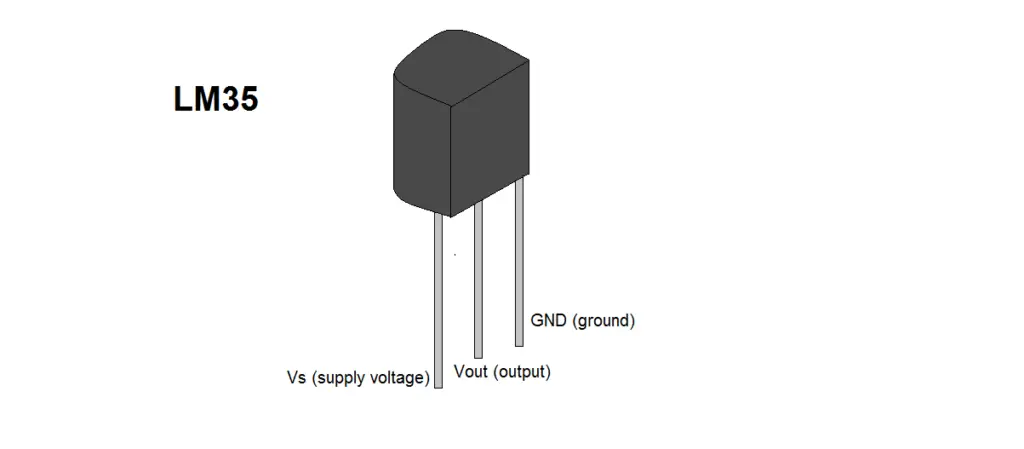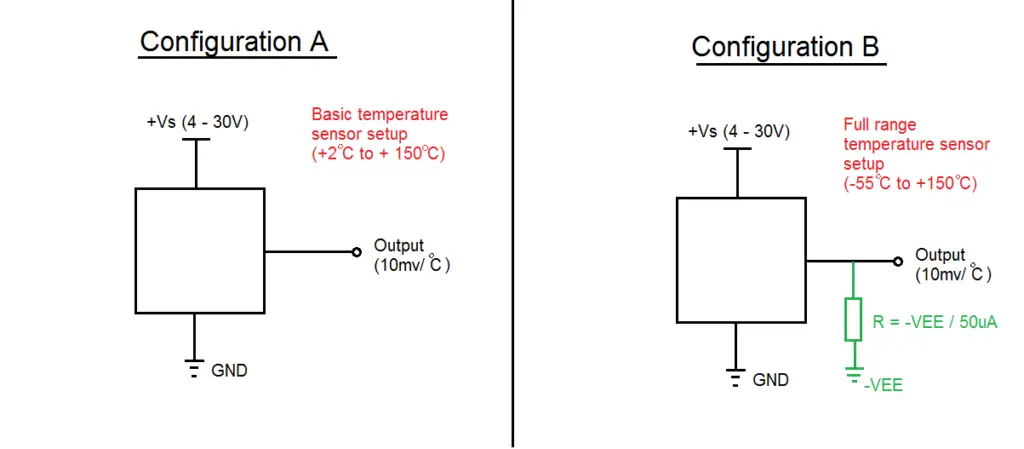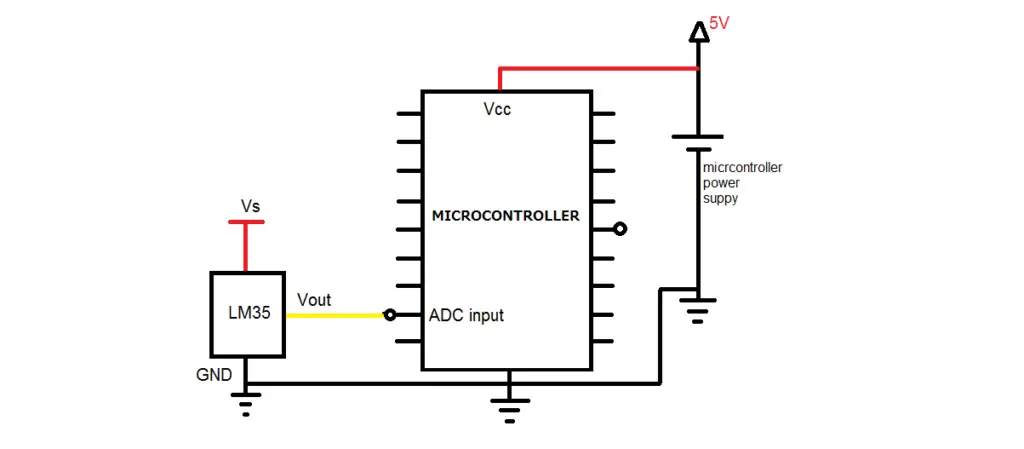There are sensors for many applications from measuring, acceleration, speed, distance, smoke etc.
Only of the many sensors available, and one used in many everyday settings is a temperature sensor.
Notably the LM35 sensor.
It is a three terminal integrated chip whose output voltage varies proportionally to the temperature.
The LM35 is commonly used to measure the ambient temperature of a room, or enclosed space.
But, can a LM35 measure body temperature? Yes, a LM35 can be used to measure body temperature as well. To measure your body temperature using the LM35, you will need to ensure there is contact between the LM35 and some part of your body, like your finger, wrist, head etc.
Closer look at the LM35
Let’s take a quick look at the LM35 which will give us a better understanding of the question at hand.
Temperature sensing is crucial for many areas of everyday life.
The heater you may have in your room has a temperature sensor which enables it to maintain the temperature you have set so you can be comfortable during those cold winter nights.
Another crucial application is your car. Temperature sensors are used to make sure the car does not overheat.
The LM35 is a temperature sensor that enhances the ability of the overall system it is part of by providing it with temperature information.
The LM35
Below is the LM35

The great thing about the LM35 is that it does not require additional circuitry to function.
The LM35 is an analog device. What this means is that it’s output voltage changes proportional with temperature.
How much it’s voltage changes according to temperature comes down to the sensor’s sensitivity.
The LM35’s sensitivity is 10mV/degree celsius.
So, for example, if a voltage of 300mV appears at its output, the temperature in celsius is 30 degrees (300mV x 10mV).
This temperature is provided in Centigrade (celcius). If you need to convert celsius to fahrenheit, you will need to convert this number in your code.
Temperature of the LM35
The temperature range of the LM35 is determined by two configurations which can be seen below;

As you can see, the two different configurations yield different temperature ranges for the LM35.
If you do not require to measure temperatures below 0, Configuration A is a better suited option.
However, if you require to sense negative temperatures, the setup in Configuration B will be necessary.
Contact vs Non-contact temperature sensors
Since we are discussing measuring body temperature, a note needs to be made of the different types of temperature sensors available.
There are primarily two types of sensors when it comes to measuring the temperature of an object; Contact and Non-Contact.
Contact temperature sensors as their name suggests need to come in contact with an object in order to measure its temperature.
Whereas, non-contact (again as the name suggests), does not need to come in direct contact with an object to measure its temperature.
Non-contact temperature sensors use infra-red sensors which detect the object’s temperature from a distance.
Can a LM35 measure body temperature?
The LM35 is a temperature sensor which is best suited for applications that measure the ambient temperature.
Ambient temperature is the air temperature surrounding an object or environment where you might store equipment.
So, like the heater example at the start, the LM35 would be used to measure the air temperature of the room.
However, it can be used to measure body temperature as well, but direct contact will be needed.
This is because the LM35 does not have the ability to measure an object’s temperature from a distance.
Placing the LM35 near the body will not give an accurate reading of its temperature so direct contact will be a more effective method.
Response time of an LM35 measuring body temperature
The time it takes a sensor to react to a change in temperature is important.
A temperature sensor that lags behind changes in temperature is not going to give an accurate representation as the temperature might not match the particular time stamps.
Also, you might require it to give instantaneous updates. So, the lower the response time the better.
The LM35 has a relatively fast response time if it is already at ambient temperature and the change in temperature is gradual.
However, an abrupt change in temperature could increase the response time of the LM35 up to 2 minutes.
When it comes to body temperature, your main concern should be the accuracy of temperature reading. So, the response time of the LM35 shouldn’t be much of an issue.
Is the LM35 the best option to measure body temperature?
While you can use a LM35 to measure body temperature, a question to ponder is whether it is the best option.
A couple of downsides of using the LM35 to measure body temperature are its response time, and if it is measuring an object’s temperature (like the body) it will need to come in contact with it.
A non-contact temperature sensor (that uses infra-red) would be more ideal for measuring body temperature.
That way you do not have to always place the sensor on your body. However, these types of sensors are a bit expensive.
Another great alternative to the LM35 is a Thermistor.
A thermistor is a negative thermal coefficient (NTC) sensor used to measure surface temperature.
They are commonly used in medical applications as adult rectal, pediatric rectal, and skin probes. So, this would be another great option as a body temperature sensor.
Benefits of using a LM35 to measure body temperature
However, the humble LM35 has many benefits.
You might be low on funds and need a cheap way to measure body temperature. Well the LM35 is a great option as it is very inexpensive, costing around $1.50.
It does not require extensive knowledge to get up and running.
The setup for the LM35 is as easy as soldering wires to its terminals. It does not require any other components (other than a resistor for negative values) to operate.
There is no need for calibration. Once you have connected the LM35, it is good to go to measure your body temperature.
The last benefit is that it is readily available. Your local electronic store will no doubt have the LM35 in stock.
LM35 circuit to measure body temperature
A great way to use the LM35 to measure body temperature, is to use it in conjunction with a microcontroller (like an arduino).
The microcontroller will need to have an Analog to Digital Converter (ADC), which gives it the ability to convert analog voltages to digital values.
Below is the circuit setup of the LM35 and microcontroller.

To calculate the temperature the following steps need to be followed;
- Micrcontroller converts analog voltage (at output of LM35) to a digital value
- Use the digital value in the equation below to find out what the voltage is (Vin)
- Convert this voltage to millivolts
- Then multiply this value by 10mV to obtain the temperature in degree celsius

*Note, if you are not placing the LM35 on a printed circuit board, make sure the wires you use are as small as possible. Longer wires will increase the noise interference created by inductance which will affect the temperature reading.




